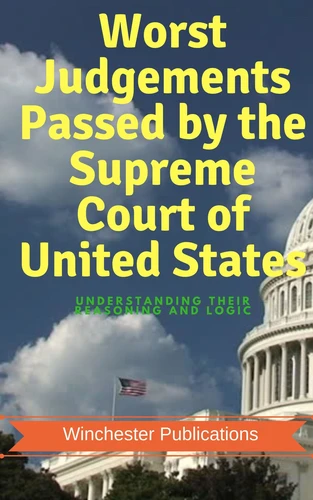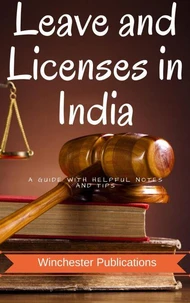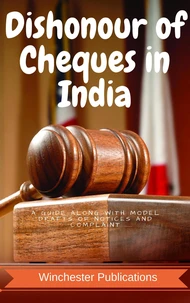Worst Judgements Passed by the Supreme Court of United States: Understanding Their Reasoning and Logic
Par :Formats :
Disponible dans votre compte client Decitre ou Furet du Nord dès validation de votre commande. Le format ePub est :
- Compatible avec une lecture sur My Vivlio (smartphone, tablette, ordinateur)
- Compatible avec une lecture sur liseuses Vivlio
- Pour les liseuses autres que Vivlio, vous devez utiliser le logiciel Adobe Digital Edition. Non compatible avec la lecture sur les liseuses Kindle, Remarkable et Sony
 , qui est-ce ?
, qui est-ce ?Notre partenaire de plateforme de lecture numérique où vous retrouverez l'ensemble de vos ebooks gratuitement
Pour en savoir plus sur nos ebooks, consultez notre aide en ligne ici
- FormatePub
- ISBN978-1-386-32047-0
- EAN9781386320470
- Date de parution11/09/2018
- Protection num.pas de protection
- Infos supplémentairesepub
- ÉditeurRelay Publishing
Résumé
Supreme Court Decisions have far reaching impact on almost every aspect of the country within which the court exercises jurisdiction. The Supreme Court of the United States, much like the Supreme Court of any other nation, is the highest court of the land and is the final forum of adjudication. The Supreme Court of the United States is very well known for it's landmark decisions such as Loving v. Virginia (1967) which found restrictions on interracial marriage unconstitutional; New York Times Co.
v. Sullivan (1964), which protected freedom of the press in the realm of political reporting and libel; Baker v. Carr (1962) and Reynolds v. Sims (1964), which established the one-person, one-vote concept in legislative apportionment; and Obergefell v. Hodges, the 2015 same-sex-marriage ruling. But on the negative side, the Supreme Court of the United States has also passed some shocking rulings, which paved the way for regression in the United States of America.
In this book, we shall look at some of the most shocking decisions passed by the highest court in the United States of America and try to understanding the reasoning behind the said decisions. Supreme Court Decisions have far reaching impact on almost every aspect of the country within which the court exercises jurisdiction. The Supreme Court of the United States, much like the Supreme Court of any other nation, is the highest court of the land and is the final forum of adjudication.
The Supreme Court of the United States is very well known for it's landmark decisions such as Loving v. Virginia (1967) which found restrictions on interracial marriage unconstitutional; New York Times Co. v. Sullivan (1964), which protected freedom of the press in the realm of political reporting and libel; Baker v. Carr (1962) and Reynolds v. Sims (1964), which established the one-person, one-vote concept in legislative apportionment; and Obergefell v.
Hodges, the 2015 same-sex-marriage ruling. But on the negative side, the Supreme Court of the United States has also passed some shocking rulings, which paved the way for regression in the United States of America. In this book, we shall look at some of the most shocking decisions passed by the highest court in the United States of America and try to understanding the reasoning behind the said decisions.
v. Sullivan (1964), which protected freedom of the press in the realm of political reporting and libel; Baker v. Carr (1962) and Reynolds v. Sims (1964), which established the one-person, one-vote concept in legislative apportionment; and Obergefell v. Hodges, the 2015 same-sex-marriage ruling. But on the negative side, the Supreme Court of the United States has also passed some shocking rulings, which paved the way for regression in the United States of America.
In this book, we shall look at some of the most shocking decisions passed by the highest court in the United States of America and try to understanding the reasoning behind the said decisions. Supreme Court Decisions have far reaching impact on almost every aspect of the country within which the court exercises jurisdiction. The Supreme Court of the United States, much like the Supreme Court of any other nation, is the highest court of the land and is the final forum of adjudication.
The Supreme Court of the United States is very well known for it's landmark decisions such as Loving v. Virginia (1967) which found restrictions on interracial marriage unconstitutional; New York Times Co. v. Sullivan (1964), which protected freedom of the press in the realm of political reporting and libel; Baker v. Carr (1962) and Reynolds v. Sims (1964), which established the one-person, one-vote concept in legislative apportionment; and Obergefell v.
Hodges, the 2015 same-sex-marriage ruling. But on the negative side, the Supreme Court of the United States has also passed some shocking rulings, which paved the way for regression in the United States of America. In this book, we shall look at some of the most shocking decisions passed by the highest court in the United States of America and try to understanding the reasoning behind the said decisions.
Supreme Court Decisions have far reaching impact on almost every aspect of the country within which the court exercises jurisdiction. The Supreme Court of the United States, much like the Supreme Court of any other nation, is the highest court of the land and is the final forum of adjudication. The Supreme Court of the United States is very well known for it's landmark decisions such as Loving v. Virginia (1967) which found restrictions on interracial marriage unconstitutional; New York Times Co.
v. Sullivan (1964), which protected freedom of the press in the realm of political reporting and libel; Baker v. Carr (1962) and Reynolds v. Sims (1964), which established the one-person, one-vote concept in legislative apportionment; and Obergefell v. Hodges, the 2015 same-sex-marriage ruling. But on the negative side, the Supreme Court of the United States has also passed some shocking rulings, which paved the way for regression in the United States of America.
In this book, we shall look at some of the most shocking decisions passed by the highest court in the United States of America and try to understanding the reasoning behind the said decisions. Supreme Court Decisions have far reaching impact on almost every aspect of the country within which the court exercises jurisdiction. The Supreme Court of the United States, much like the Supreme Court of any other nation, is the highest court of the land and is the final forum of adjudication.
The Supreme Court of the United States is very well known for it's landmark decisions such as Loving v. Virginia (1967) which found restrictions on interracial marriage unconstitutional; New York Times Co. v. Sullivan (1964), which protected freedom of the press in the realm of political reporting and libel; Baker v. Carr (1962) and Reynolds v. Sims (1964), which established the one-person, one-vote concept in legislative apportionment; and Obergefell v.
Hodges, the 2015 same-sex-marriage ruling. But on the negative side, the Supreme Court of the United States has also passed some shocking rulings, which paved the way for regression in the United States of America. In this book, we shall look at some of the most shocking decisions passed by the highest court in the United States of America and try to understanding the reasoning behind the said decisions.
v. Sullivan (1964), which protected freedom of the press in the realm of political reporting and libel; Baker v. Carr (1962) and Reynolds v. Sims (1964), which established the one-person, one-vote concept in legislative apportionment; and Obergefell v. Hodges, the 2015 same-sex-marriage ruling. But on the negative side, the Supreme Court of the United States has also passed some shocking rulings, which paved the way for regression in the United States of America.
In this book, we shall look at some of the most shocking decisions passed by the highest court in the United States of America and try to understanding the reasoning behind the said decisions. Supreme Court Decisions have far reaching impact on almost every aspect of the country within which the court exercises jurisdiction. The Supreme Court of the United States, much like the Supreme Court of any other nation, is the highest court of the land and is the final forum of adjudication.
The Supreme Court of the United States is very well known for it's landmark decisions such as Loving v. Virginia (1967) which found restrictions on interracial marriage unconstitutional; New York Times Co. v. Sullivan (1964), which protected freedom of the press in the realm of political reporting and libel; Baker v. Carr (1962) and Reynolds v. Sims (1964), which established the one-person, one-vote concept in legislative apportionment; and Obergefell v.
Hodges, the 2015 same-sex-marriage ruling. But on the negative side, the Supreme Court of the United States has also passed some shocking rulings, which paved the way for regression in the United States of America. In this book, we shall look at some of the most shocking decisions passed by the highest court in the United States of America and try to understanding the reasoning behind the said decisions.









